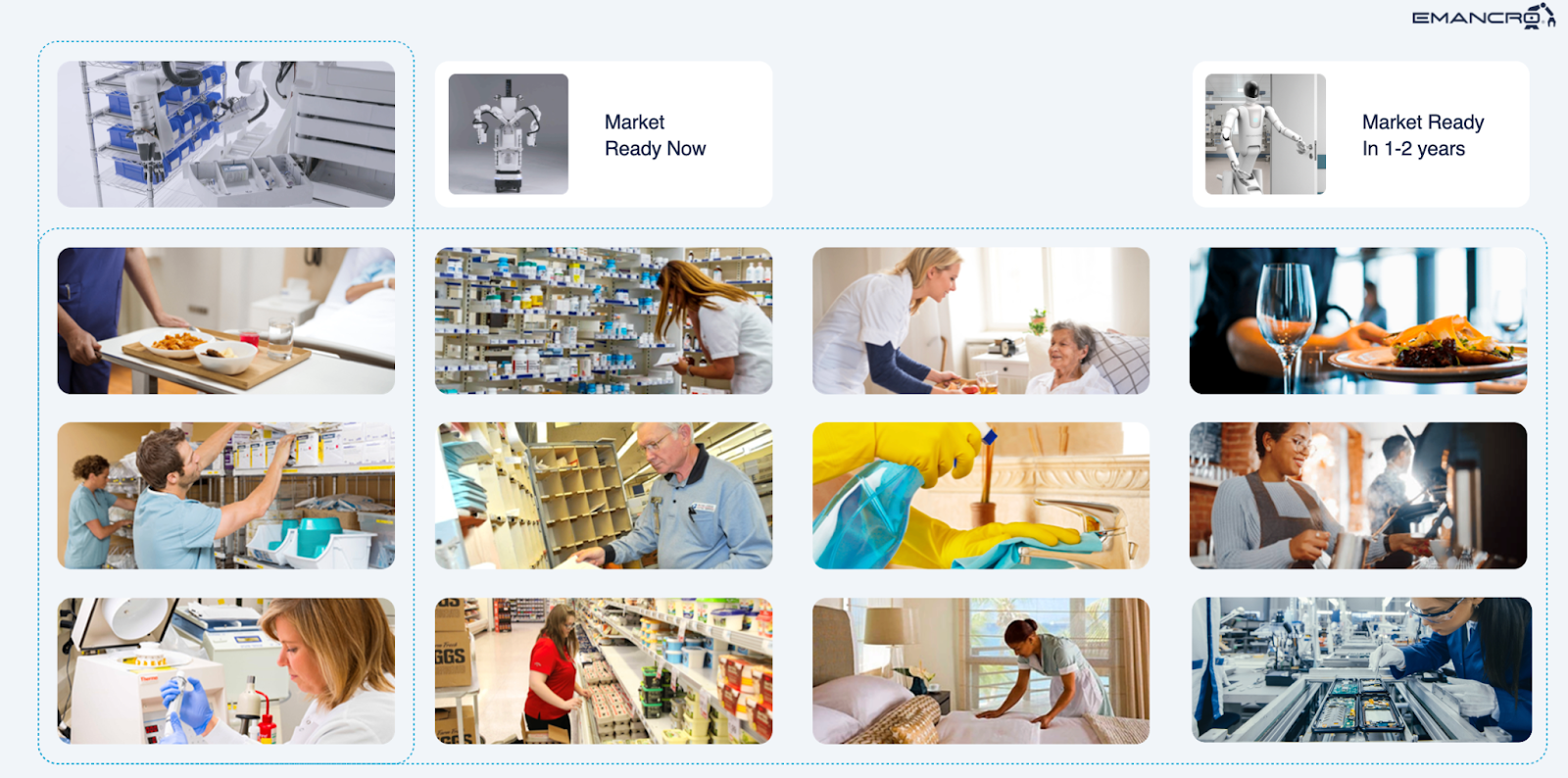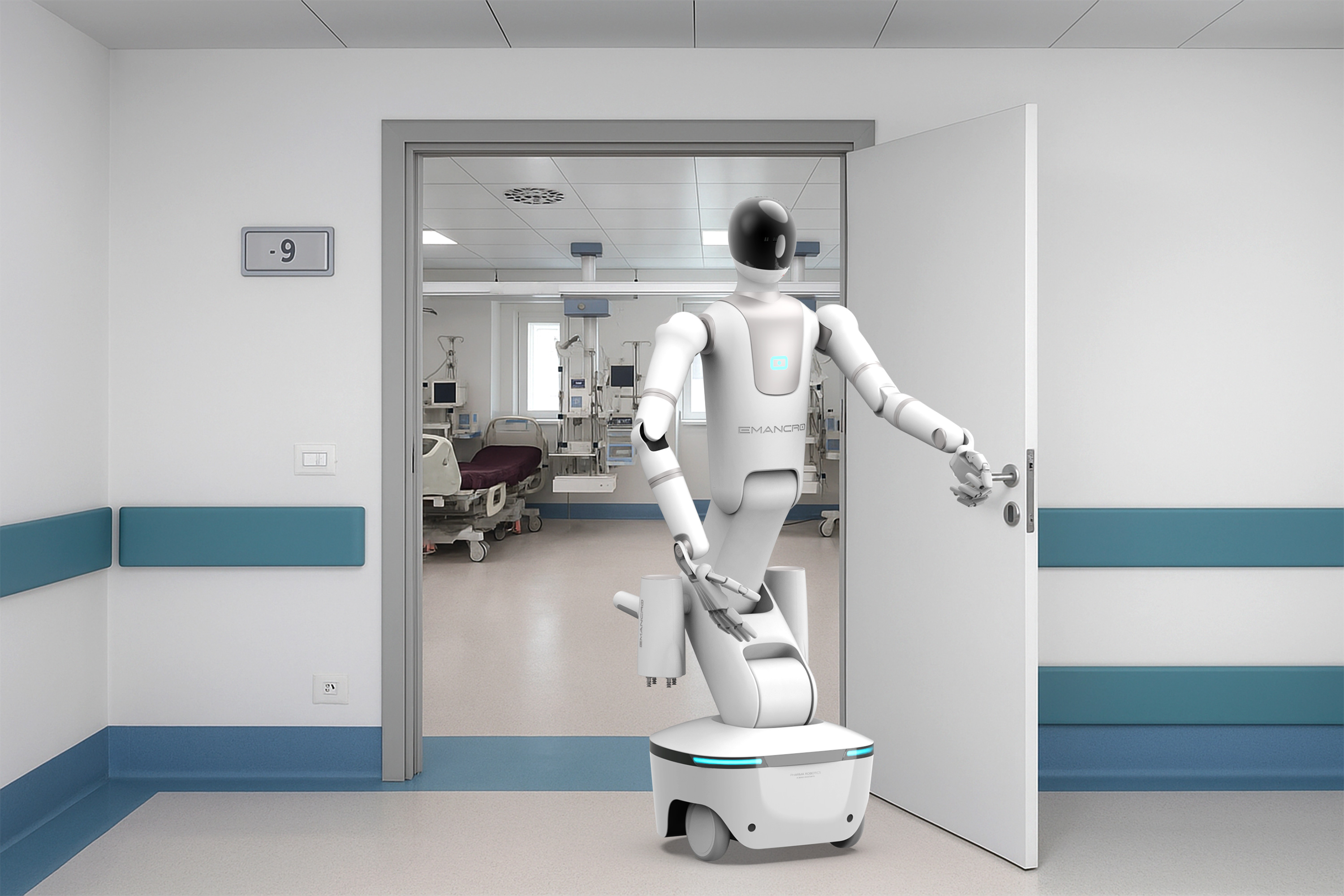Despite the rapid pace of innovation in humanoid robotics, real-world deployments remain scarce. We believe this gap stems from a mismatch between the current capabilities of robots and the expectations placed on them in practical settings.
For general-purpose robots to meaningfully contribute to society, they need a gradual on-ramp—from executing a few highly valuable tasks to mastering a wide range of dependable skills across diverse environments. This path requires an ecosystem that both demands automation and offers a broad spectrum of tasks that robots can learn from.

We argue that hospitals represent an ideal environment deploying and evolving general-purpose robots. Hospitals face severe staffing shortages—up to 30% in some regions—and present a unique opportunity to create economically viable, high-impact deployments for robotic systems.
Hospitals combine two critical ingredients: task intensity and task diversity. In a 1,200-bed hospital, for example:
- 25,000 doses of medication are administered daily, involving complex chains of verification and delivery to patient bedsides or operating rooms.
- 3,600 meals are served each day.
- 12,000 lab samples are transported from patients to labs.
- 7,500 pieces of linen are processed and redistributed daily.
These operations involve large, specialized teams—over 150 pharmacy technicians, 80 food service workers, 50 supply chain technicians, and 30 lab technicians—each performing essential, repetitive, and often physically demanding work.
Crucially, many of these tasks are high-stakes and highly structured. Errors—such as administering the wrong medication or running out of critical drugs during surgery—can be life-threatening. Yet the tasks themselves, while sometimes complex (e.g., navigating surgical suites cluttered with monitors and cables), are typically well-defined and repetitive. For instance, restocking medication cabinets follows a consistent protocol, and robotic systems can verify accuracy using their internal barcode scanners.
Even though hospitals are an environment where tasks have comparatively high value (when compared to other industries like warehouse, retail or manufacturing), specialized robots for each type of logistics task would be far too expensive. We believe that only general-purpose robots can offer an economically viable solution to the plethora of a hospital’s logistics needs.
By proving themselves in this high-demand, high-structure environment, general-purpose robots can develop the reliability and versatility needed to take on broader roles—not only within healthcare but far beyond. Hospitals are not just a deployment site for robots—they are the launchpad for bringing general-purpose robotics into the real world.



